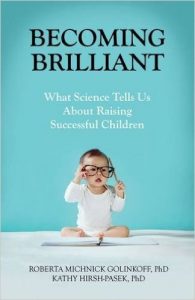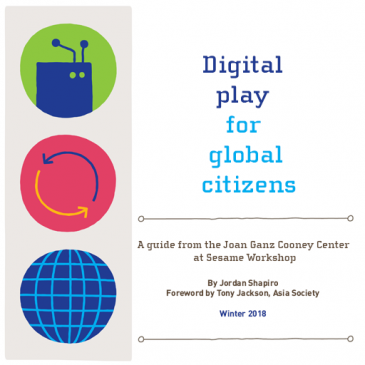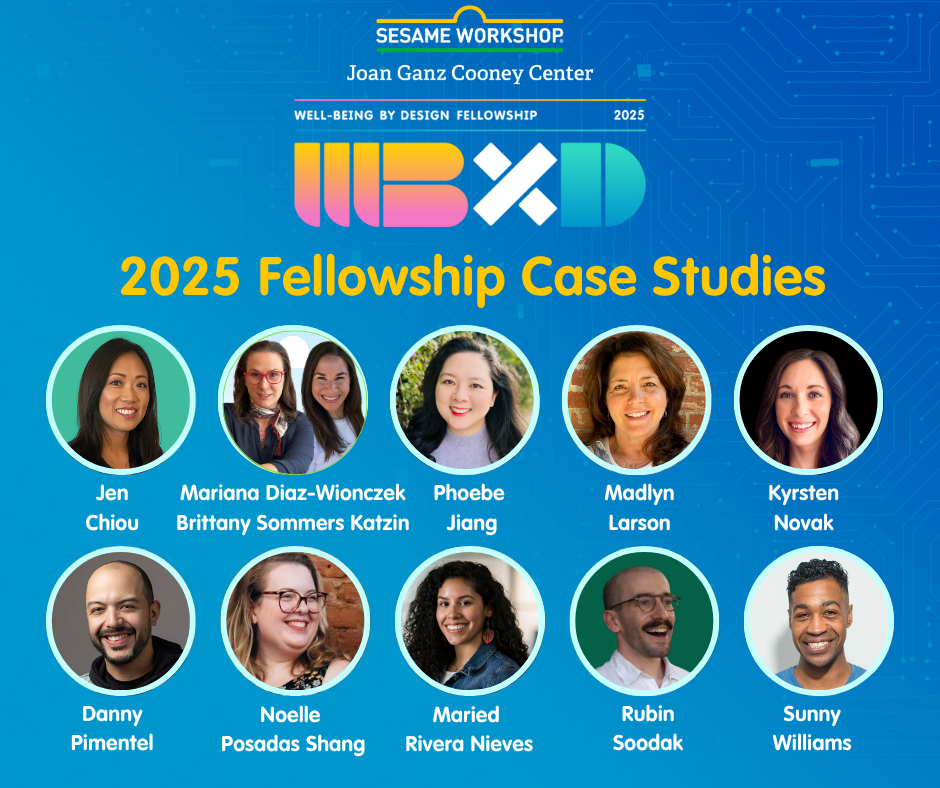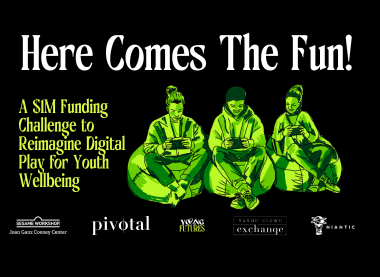A Scientific Approach to Raising Successful Children
August 8, 2016

Becoming Brilliant: What Science Tells Us About Raising Successful Children by Roberta Michnick Golinkoff, PhD and Kathy Hirsh-Pasek, PhD
In their new book, Becoming Brilliant: What Science Tells Us About Raising Successful Children, Roberta Michnick Golinkoff and Kathy Hirsh-Pasek ask what it would “take to help all children be happy, healthy, thinking, caring, and sociable children who enjoy learning and who move toward becoming collaborative, creative, competent, and responsible citizens of tomorrow?” The answer they provide is tailored specifically to a 21st century global economy.
They offer a science-based framework, neatly packaged as “the 6Cs”—collaboration, communication, content, critical thinking, creativity, and confidence. These are “the key skills that will help all children become the thinkers and entrepreneurs of tomorrow.” They argue that these are the skills that kids need to become “contributing members of their communities and good citizens as they forge a fulfilling personal life.”
The 6Cs are as applicable to business as they are to education. In fact, Golinkoff and Hirsh-Pasek write, “for the first time in our memory, business leaders who think about their requirements for employees and child psychologists are talking the same language and looking for the same benchmarks.” The problem, they assert, is that “our school system seems to be stuck somewhere in the agrarian societies of past centuries.”
Since Golinkoff and Hirsh-Pasek are among the first people I always turn to when I need to ask the tough questions about learning science, I bought their new book immediately. After reading it, I had a few questions. Here is our conversation…
JORDAN: In the book, you write that “the 6Cs provide a suite of so-called hard and ‘soft-skills’ that can offer a profile of children’s competencies as they approach the society of tomorrow.” Of course, anyone who pays a lot of attention to education or early-childhood development is very familiar with this “hard” and “soft” polarization. It is a way of thinking about education that drives a lot of those annoying buzzwords and phrases, such as “character education” and “21st Century skills.”
But it is sort of a false dichotomy, isn’t it? We always hear educators, reformers, and researchers talking about finding the balance between “hard skills” and “soft skills.” But it seems to me, from reading Becoming Brilliant, that the categories themselves may be more problematic than they are useful. It’s not really about balance, right? It sounds like these things are actually inseparable. Soft skills, you write, “are the bedrock for hard skills,” and “more predictive of academic success than are the hard skills.”
Can you say a bit about what the science tells us about why the soft/hard dichotomy is problematic? And also, explain how your 6Cs framework aims to help us move toward a more effective way of thinking about the skills our schools should be cultivating?
Roberta: It’s so unfortunate that the terms “hard” and “soft” skills have been used. We all have negative associations to the word “soft” – who wants to be good at something soft! But it turns out that so-called soft skills like “collaboration” are essential for life success. If you can’t “work and play well with others”- that item from our old report cards – you are not going to do well in the world. Consider how collaboration can complement your own skill set and make you and your work partner produce a better product. People are now collaborating over the internet with individuals they will never meet who are on the other side of the world. Collaboration means being able to take the perspective of another, to use your self-regulatory skills so you don’t blurt out, “Bad idea!” but work together to make it a better idea. Collaboration – whether it is in the classroom, on the soccer field, or in your marriage – is an essential life skill.
In fact, Collaboration is the first skill among the 6C’s. The next one is Communication which includes speaking and writing and that lost art of listening. Of course, it builds on collaboration because you need someone to communicate with! Then there is Content – still absolutely essential. Gladwell talks about the 10,000 rule – you need to know something really well before you can see how to make it better. That leads to Critical Thinking – we are being inundated with information. We need to help kids – and ourselves – learn to select what we need for the problem at hand. Creative Innovation builds on Critical Thinking. When you figure out what’s missing with Critical Thinking, you can create something that fills that gap! Finally, Confidence is really key. How many entrepreneurs and inventors failed the first 100 times? We have to help kids develop the ability to learn from their failures and not protect them from failing.
Kathy: Let’s take a very fundamental skill like reading. We have been drilling early reading in the form of phonics and letter-to-sound correspondence for a long time and there is good scientific evidence – even brain data—to support that approach. But translating letters into sounds in only part of the problem. Those sounds have to be recognizable words – words that you know, words that mean something when you read them. Otherwise, you might as well be learning Greek or Hebrew – what comes out at the other end is meaningless. So reading depends on having strong language skills. And language skills, getting that rich vocabulary in the first place, depends on social skills – that back and forth conversation that we call – singing a conversational duet. So, when you look carefully at even something as basic as reading – you come to realize that these standard academic skills (Content) rest on a foundation of Collaboration and Communication or what some have called soft skills. Soft skills are not soft at all! In my work with the Brookings Institution, we have decided to abandon the term soft skills in favor of thinking about a breadth of skills – some social, some creative, some communicative. The 6Cs is one framework for thinking through that breadth.
JORDAN: I think it is important to emphasize how much we now know “about the role of interpersonal relationships and social acumen in young children and adults.” No doubt this is why you emphasize collaboration and communication among your 6Cs. But when I think about the parents and teachers that I talk to regularly, I’m not entirely sure that most of them get how much science actually knows about how these skills develop.
Can you explain, in simple terms, how kids go from everyday play to developing the sort of sophisticated collaboration and communication skills that will be so important to success in a 21st Century global economy? Can you break down the basics: what’s Executive Function? How does play foster Self-Regulation? And aren’t these precisely the competencies that will eventually lead to strong critical thinking skills?
Kathy: The study of emotion regulation and executive function includes some really key abilities like learning to control your impulses (‘Don’t push Johnny off the swing – wait your turn’) or being a flexible rather than a rigid thinker (‘Hmm—I there is more than one way to build a mousetrap’) and an attentive student in and out of school. A number of scientists are looking seriously at these skills and the more we look, the more we see how mastery of emotion regulation and executive function are not only important for navigating the social world (‘If you push Johnny, he won’t be your friend’), but also a key indicator for how well you will do in school (in reading and math scores on standard tests). Some have termed executive function skills learning-to-learn skills and the evidence suggests that they can be taught. Researchers like Deborah Leong have developed school-based programs like Tools of the Mind which use play throughout the school day to help children attend and control their impulses (e.g., you take the ear and be the listener while Olivia takes the mouth and is the speaker. Then you can switch roles). Simple group clapping games also force us to pay attention to one another and to control the impulses to be out of synch. As with the Tools program, mastery of playful learning games helps children develop these learning to learn skills and boosts later academic and social outcomes for children.
Roberta: Parents and other adults help kids develop these important skills when they give kids strategies for self-control and help them understand the consequences of their behavior. When Sally bops Cynthia with her truck, parents who say things like, “Oh how would you feel if Cynthia did that to you?” get kids to think about what they did. Just punishing without discussion doesn’t help kids develop the self-regulation they need to succeed in the world. When you tell a child that “Mommy is busy; can you color for a little while and then I will play with you?” you help children learn to control their desire to have mom’s attention NOW. Now this might take a few hundred times but it’s worth it! Kids who are prompted to think about their behavior are better behaved in the long term than those who are just punished.
JORDAN: You write that “the great jobs in Fortune 500 companies, now and in the future, are likely to go to people who have thinking skills that cannot be taught through memorization.” But ironically, as the learning industry becomes more homogenized and increasingly controlled by fewer and fewer big corporate content and curriculum creators, our school reform efforts seem to fortify an even narrower focus on rote learning. These corporations seem to be working against their own best interest; they are not creating the very employees they’d presumably need to thrive in the future.
In the book, you say it better than I can, explaining why this is problematic: “Robots can memorize the facts, but only children have the potential to socialize, be good citizens, think and create.” There’s sort of an implicit economic imperative in that statement, a hint about automation and human production. Especially in an internet era when the entire library has been smooshed into a device that can fit in your pocket, the skills you frame in these 6Cs are key.
But this also isn’t really a profound earth shattering realization. I feel like anyone I’ve ever talked to—educators, parents, politicians, even the people who write the standardized tests—would agree that, as you say, “the true winners of the next generation will be those who can sift through mountains of information and cull just what they need.” So there’s a kind of post-industrial-era paradigm problem here. We may want to account for learning outcomes with the same kind of determinate metrics that drive the corporate sector, but clearly that will eventually just cannibalize the economy. Worse still, it won’t create fulfilled individuals. As you say, “society thrives when we craft environments, in and out of school, that support happy, healthy, thinking caring, and social children citizens tomorrow.”
Can you explain how we could use the 6Cs framework as a more holistic way to measure learning outcomes? Couldn’t it actually create even more, perhaps even better, accountability?
Roberta: Great question Jordan. We talk about Mr. Straight-A in the book who was pretty much guaranteed a job upon finishing school. But no more. Without the other C’s you might not get that job. Even in Silicon Valley, where jobs are still abundant, recruiters have said that social skills like Collaboration and Communication are essential for landing that job. And you are right: the paradigm is shifting but the schools are not. This is one of the reasons we wrote the book. Kids spend only 20% of their waking time in school. We have got to start attending to the other 80% when parents and caregivers can offer children fun ways to learn the 6C’s that the school might be ignoring. Now some schools are great – we want ALL kids to have a Sidwell Friends education like the Obama girls. But some are not helping children learn the breadth of skills they will need to make it in this new ever-changing world. Two business professors at MIT talk about “Race Against the Machine” as so many of our jobs will be taken by computers and robots. Our kids need to cultivate those skills that computers are not good at!
Kathy: Thanks for this question. Indeed, we have a school system that is largely out of touch with the current realities of the global workforce and its demands. Several years ago, a Time Magazine story suggested that if Rip Van Winkle woke up today, the school would be the only familiar institution in the society. In our rush to prepare the next generation for the workforce, we have ironically turned to overtesting on facts that modern day computers can retrieve much faster than we can. We are thus not preparing our children for the present let alone the future.
Our book takes a step back and tries to realign the way we think about learning and education by revisiting a basic question – what counts as success in a modern, global society? If success is defined by how well we do as a population in math and reading bubble tests – then we should indeed have a school system that only teaches narrowly construed math and reading (I will add, however, that this strategy has been fairly ineffective as we know from 15 years of No Child Left Behind). If success is to be defined instead as grooming social, caring, thinkers and creators who will be responsible citizens, then we have to ask what we should include in our educational systems and extracurricular activities to foster those outcomes. The problem is not with accountability or measurement per se – it is with what we want to measure and how we should measure it. I am all for using and discovering measuring tools that ask if children are becoming less impulsive critical thinkers and problem solvers. Such tools would not only prepare them for a different type of success, but would also help parents and teachers learn to evaluate growth in these areas. With these measurement tools in hand, we also need to ask what experiences young children need to have at home, in schools and in communities to foster these outcomes.
The 6Cs provides us with an evidence based way to rethink what counts as success – to recognize that it is more than our score on a narrowly construed test. One we broaden our view of what we need to master, we can engineer opportunities for growing these skills. We can also use the 6Cs as guide to a dynamic learning model that is as relevant for schools as it is for the future workplace – and as relevant for children as it is for adults.



